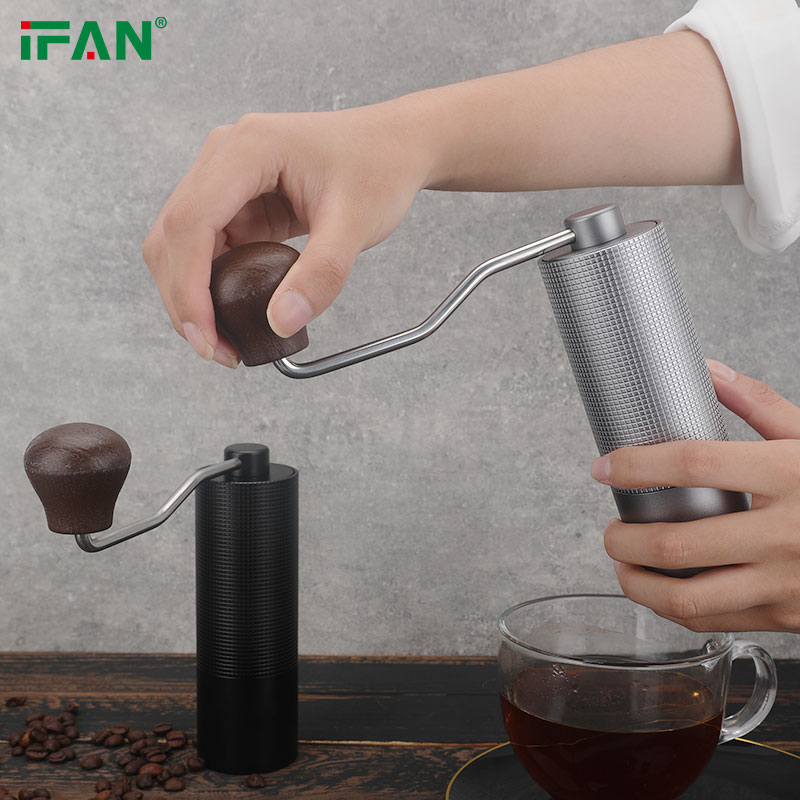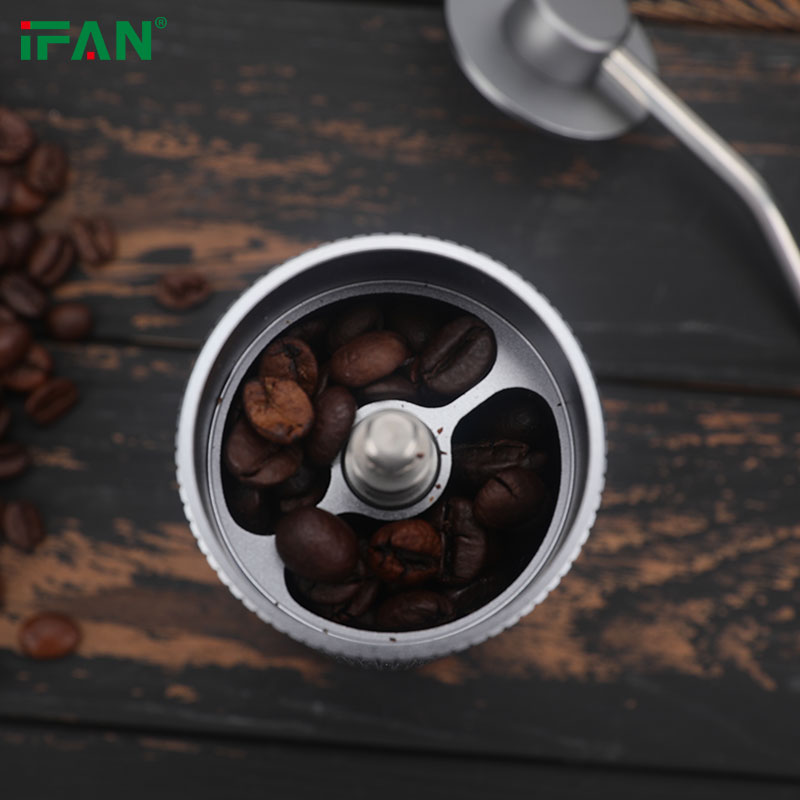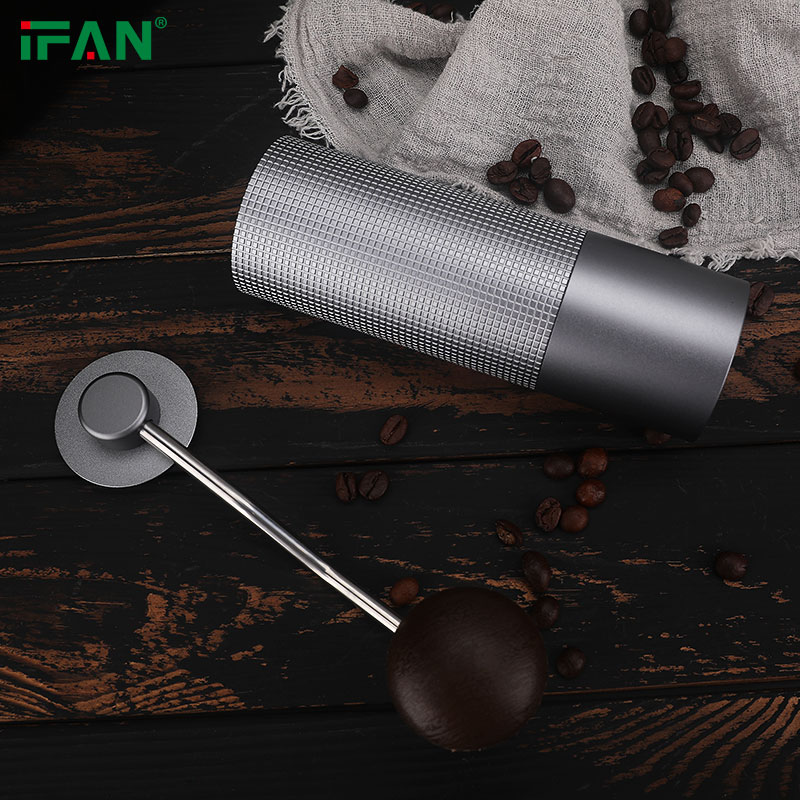Coffee is a beloved beverage enjoyed by millions around the world. However, not all coffee is created equal. The richness and quality of your daily cup of joe heavily depend on the beans you use and how you grind them. In fact, the process of grinding beans is one of the most crucial steps in brewing a great cup of coffee. It helps extract the essential oils and flavors that make your coffee taste rich and aromatic. Therefore, knowing how to grind your beans properly can make a significant difference in the quality and taste of your coffee. In this article, we’ll explore the best ways to grind beans and enhance your coffee experience.
Grinder types
Before we delve into the particulars of grinding beans, it’s important to understand the different types of coffee grinders available, as each has its pros and cons. There are three primary types of grinders: manual, blade, and burr.
A manual coffee grinder is the simplest and most traditional type of grinder. It consists of two parts: a handle and a cylindrical container with teeth that grind the beans as you turn the handle. It’s portable, easy to use, and doesn’t require electricity.

Blade grinders, on the other hand, use a spinning blade to grind beans. It’s similar to a blender or food processor, and the level of grinding is determined by how long you let the blade run. Blade grinders are usually more affordable and convenient, but they produce inconsistent results and can overheat the beans, altering their flavor.
Finally, the most recommended and preferred type of grinder is the burr grinder. Burr grinders use two revolving abrasive surfaces (burrs) to grind the beans. They come in two types: conical and flat burrs. Conical burrs use a cone-shaped grinder, while flat burrs use two parallel disks. Burr grinders produce consistent and evenly sized grinds, which is essential for proper extraction and a balanced flavor.
Grind size
The size of the grind is a crucial factor that affects the flavor of your coffee. It determines how quickly the water extracts the flavors and essential oils from the beans during the brewing process. The general rule of thumb is that the longer the brewing time, the coarser the grind, and the shorter the brewing time, the finer the grind.
For instance, if you’re using a French press, which has a long brewing time, you’ll need a coarse grind to prevent over-extracting the flavors. On the other hand, if you’re making espresso, which has a short brewing time, you’ll need a fine grind to extract the perfect amount of flavor and aroma.
Here are some common grind sizes and their recommended brewing methods:
- Coarse grind: French press, cold brew, percolator
- Medium grind: Pour-over, drip coffee maker, Aeropress
- Fine grind: Espresso, Moka pot
Grind amount
The amount of coffee you grind also plays a role in the quality and consistency of your coffee. The recommended amount of coffee per cup is around 10 grams, but this can vary depending on your preference and brewing method. However, it’s essential not to grind more coffee than you need at once, as the freshness of the beans decreases the longer they’re ground. Ideally, you should only grind the amount of beans you need for your immediate use, as this guarantees maximum freshness and flavor.
Grinding technique
The technique you use for grinding your beans can also impact the quality of your coffee. Here are some tips to help you achieve the perfect grind:
- Use a burr grinder: As we mentioned earlier, burr grinders are superior to blade grinders as they produce consistent and uniformly-sized grinds. They also prevent overheating and damaging the beans, ensuring optimal flavor extraction.
- Clean your grinder: Make sure you regularly clean your grinder to prevent coffee buildup and residue, which can negatively impact the quality and flavor of your coffee.
- Grind in batches: If you’re making a large pot of coffee, consider grinding your beans in smaller batches to ensure consistent size and freshness.
- Use the correct grind size: As we mentioned earlier, the size of the grind plays a crucial role in the extraction process and can affect the flavor. Make sure you’re using the correct grind size for your brewing method.
- Don’t rush the grind: Avoid rushing the grinding process to prevent overheating the beans, which can alter their flavor. Burr grinders, in particular, work at a slower, more precise pace.
Storage
Once you’ve ground your beans, how you store them can also impact their flavor and freshness. Coffee is highly perishable and degrades quickly when exposed to air, moisture, and heat. Therefore, it’s crucial to store your coffee in an airtight container in a cool, dry place away from direct sunlight. Avoid storing your coffee in the fridge or freezer, as it can absorb unwanted odors and moisture.

Conclusion
Grinding beans may seem like a small detail, but it plays a significant role in the quality, flavor, and aroma of your coffee. Therefore, it’s essential to choose the right grinder, grind size, technique, and storage to achieve optimal results. Investing in a high-quality burr grinder and experimenting with different grind sizes and techniques can help you take your coffee game to the next level. Enjoy your coffee!

